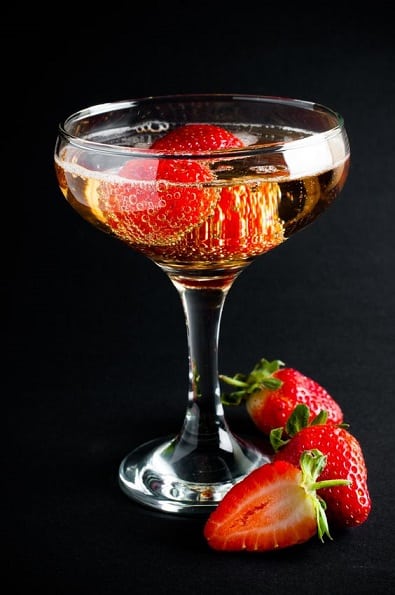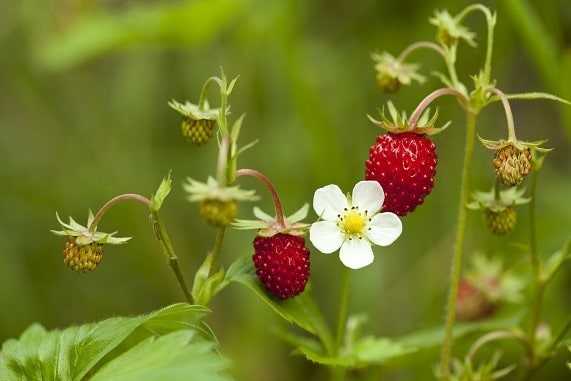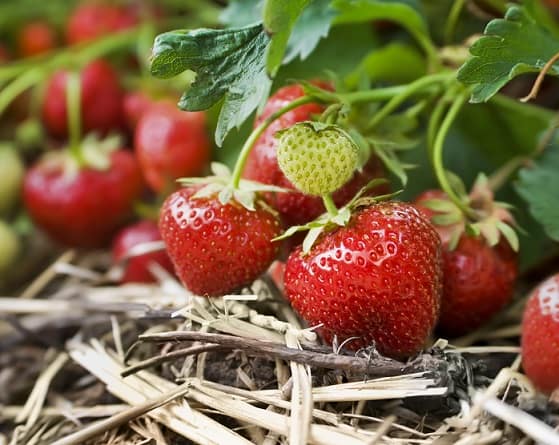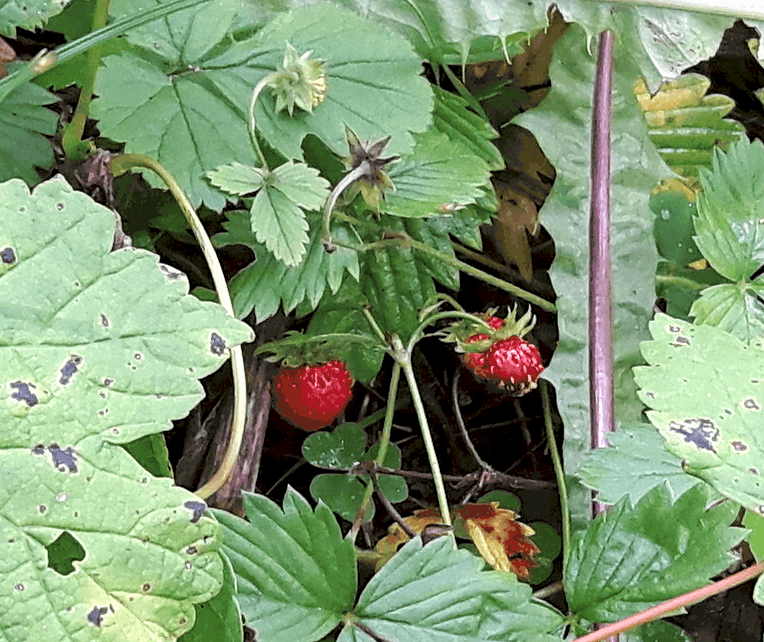 When it comes to pesticides, organic isn’t automatically essential for acne. Broccoli and pineapple, for example, have so few pesticides that their acne benefits steamroller them.
When it comes to pesticides, organic isn’t automatically essential for acne. Broccoli and pineapple, for example, have so few pesticides that their acne benefits steamroller them.
Coffee and chocolate, meanwhile, are more ambiguous. The original coffee beans, hanging from a jungle tree, are blasted with pesticides, but the roasting temperatures of 180-205C are proven to obliterate 99.8% of agrochemicals (study). Organic is a great precaution, because small remnants could remain. However, if your wallet is empty, their plentiful antioxidants (coffee is the average American’s number one source) will probably outweigh the dangers.
Finally, there’s the irredeemables, a rag tag crew of pesticide infused mutants which any self respecting acne patient should avoid. They were long led by apples, but in 2015, a coup took place.
Which popular fruit is the worst for pesticides now? The answer is the common strawberry.
Unlike coffee, there’s no debate, no um-ing and ah-ing. Strawberries are a tasty fruit for clear skin, rich in antioxidants and vitamin C. However, the conventional version is a disaster. It’s not a food you want inside your body, except for the most special Christmas treat.
Strawberries’ laboratory chemicals easily swing the pendulum towards acne mayhem, not to mention infertility and brain fog.
4 years of supreme pesticide power
We can start by looking at California, which grow 9 out of 10 American strawberries. Legends state that despite covering only 1% of California’s total agricultural land, strawberry farming hoovers up 8% of total agrochemical use.
Theoretically, pesticides are controlled, but strawberries are so important to the economy that Californian politicians hand out exemptions like an evil clown hands out balloons. In parts of Salinas, farmers have edged up to 1.3 million pounds extra 1,3-D yearly.
Corn crops are already considered to be pesticide heavy, and require 5 pounds of chemicals per square meter of land to be economically justified. Strawberries require 300 pounds. Try growing them in your back garden and you’ll be pleasantly surprised as your garden slowly turns into a nature reserve, with worms, snails, grubs, blackbirds and even David Attenborough swooping in.
Which brings us to the yearly “dirty dozen”, from the Environmental Working Group, a treasure trove of info for dodgy chemicals in foods.
In 2009, peaches were the top pesticide-covered food, with apples second, and strawberries in sixth. Celery took over in 2010, and from 2011 to 2015, apples enjoyed a reign of terror. Strawberries zoomed around like a bouncy ball, ranked 3rd, 5th, 11th, 2nd and finally, 4th…
…until 2016, when they finally achieved the coveted number one spot, pushing apples into second. Most recently, in 2019, the top ranking was…
ONE – strawberries. TWO – kale. THREE – spinach. FOUR – nectarines. FIVE – apples.
Red and juicy strawberries are filled with cancer-causing, hormone disrupting agents. The biggest recent study analysed 1174 non-organic strawberry batches from January 2015 to October 2016.
99% plus had at least one detectable agrochemical, and 81 pesticides were detected overall. 23 chemicals and by-products were spotted on the single dirtiest strawberry and 30% of strawberries had 10 or more individual pesticides.
Some claim that rinsing strawberries in the sink will scrub them clean like a rubber duck, but this study only found 19.8 to 68.1% reductions. Most importantly, only 20% of California’s pesticides are sprayed directly onto strawberries. The other 80% are injected into the fields as fumigants, poisonous gases which scare away worms and grubs before planting even begins.
Meanwhile, in the crocodile-controlled outback, strawberries ranked first for food crops in Australian supermarkets in 2003. In 2008, 2 Australian strawberries from 31 farmers were revealed to contain more captan (a fungicide) than strict EU limits. One strawberry contained pesticides banned in Australia. 4 of 31 strawberries were sprinkled with 4 pesticides or more and 17 had two pesticides or more.
The UK is slightly safer, with 67% of strawberries once containing pesticide residues, but in France, 20% of strawberries were once above the legal limit.
How did strawberries fall to the dark side?
 It might seem strange now, but strawberries were once far less popular than today, only seasonal available in autumn.
It might seem strange now, but strawberries were once far less popular than today, only seasonal available in autumn.
The current pesticide madness germinated in world war 1, where soldiers marching across the muddy battlefields of Europe blasted the Germans with chloropicrin, a chemical warfare agent which could bypass gas masks. When peace broke out, the US government were saddled with massive, pointless supplies. Therefore, a Hawaiian pineapple company decided to bathe their fields in it.
Weeks later, they witnessed a miracle: pineapple yields were 20 tons higher. Soil-dwelling bugs such as nematodes and wireworms were finally defeated, and strawberry merchants took notice. By the 1960s, strawberry fields were blasted with chloropicrin and another fumigant, methyl bromide. Joining forces with new, hardier agricultural strains, strawberry production went through the roof.
The problem was that the American public weren’t interested, but luckily for Strawberry Inc.’s marketing masterminds, card company American Greetings Crop was looking for a new character. Thus the strawberry shortcake was born into the world. She was plastered on cool whip containers, she appeared on cornflake and Cheerio boxes. She invaded women’s life magazines, and indeed, she invaded every corner of the American mind.
The process was complete. Banknotes were pouring in from every direction. As of 2019, Americans ate 4 times as many strawberries as 1980.
It wasn’t a newfound obessession that necessitated pesticides – it was the other way round, but the point is that by the 1990s, pesticide mania was locked in. Consequently, mega corporations and humble farmers alike were locked in a neverending cycle to keep the good times rolling.
The revolving door of chemicals
Consider the fumigant methyl chloride. In the good old days, happy tractors roamed the fields injecting it a meter deep into the soil. Worms were dissolved and within two weeks so were any strawberries.
It was the king of strawberry chemicals, but then something happened: the ozone layer got thinner. Scientists pinpointed methyl bromide, and in an unusually effective international treaty, the Montreal Protocol outlawed the chemical in 1987.
They promised total banishment by 2005, which was finally completed in 2017. Strawberry farmers were aghast. For years, Californian strawberry growers received 90% of all special farming exemptions worldwide, but from 1991 to 2012, methyl bromide use dropped by 60%.
The first knight in shining armour was 1,3-Dichloropropene. This fumigant is a by-product of plastic manufacturing and now, the third most applied agrochemical (pesticides, fungicides, insecticides…) in California.
However, in 1991, a random inspector detected levels 800 times the legal limits outside a Californian school. Within days, 1,3-D was banned, and rapidly branded a cancer causing agent. The chemical company Dow was relentless though, unleashing brighter, most positive studies. In 1995, 1,3-D was reauthorized, but with strict regulations: 6 by 6 mile townships where only 90,250 pounds could be applied.
In 2001, however, the restrictions on methyl bromide really started to bite. To protect farmers, California loosened the rules for 1,3-D, causing 1 million Californians to live in areas where 1,3-D exceeded the original 1995 limits. In six communities, the limits were broken in every year since 2002.
Dow’s lobbyists were relentless, writing letters non-stop demanding expansions. One 2002 rule said that farmers must only deplete their existing 1,3-D stockpiles, never buying more, but this was broken just two years later. California decided that 1 extra cancer case in 100,000 was the perfect balance.
Only in 2008 were Dow finally denied, after demanding that the cap rise from 90,250 to 135,375 pounds.
Methyl bromide made today’s strawberry juggernaut possible and for years farmers have embarked on a pesticide-fuelled quest to replace it.
Another classic example was methyl iodide, manufactured by Arysta. Farmers hailed it as finally, the perfect replacement. However, in 2007, 54 scientists including 5 nobel laureates combined into a deafening voice of reason with a letter to the EPA outlining its cancer risk. Methyl iodide mutates DNA like there’s no tomorrow, they said; scientists can’t even spill a drop in a laboratory without sheer terror.
The EPA didn’t care. Why would they, when they had just hired the CEO of Arysta’s North American division? Dark clouds loomed on the horizon, as California’s Department of Pesticide Registration authorised methyl iodide in 2010. The two sides went to war; farmers organised a 200 mile march, while the Pesticide Action Networks launched a “safe strawberry” TV campaign.
Then came the killing blow. A judge ordered Californian pesticide regulators to release their internal health assessment documents. The cancer causing dangers were laid bare for all to see, and in 2012, Arysta yanked all methyl iodide from the market. Instantly, farmers’ heads span towards other chemicals.
If a cancer-causing monstrosity is so difficult to remove, then subtle pesticides like bifenthrin will stick like superglue.
The top strawberry chemicals
 The statistics show that 23 chemicals are found on 10% of strawberries or more. All are suspicious for acne, while some have particularly dark powers. The three most common are…
The statistics show that 23 chemicals are found on 10% of strawberries or more. All are suspicious for acne, while some have particularly dark powers. The three most common are…
Tetrahydrophthalimide (THPI) – found on 55.3% of strawberries: actually the main by-product of captan, a fungicide bogged down by controversy ever since 1980. Why? Only causing cancer.
It started with tumours growing larger and more frequent in animals, earning it the medal of a grade 2B carcinogen from the Environmental Protection Agency (EPA). THPI itself doesn’t cause cancer, but the other main breakdown product, thiophosgene, does.
Luckily, captan has a short life in the body, with 1% lingering after 96 hours. However, it’s also linked to organ damage and causes dermatitis. Captan is wielded against gotrytis (gray mold), anthracnose fruit rot, and leather rot.
Pyraclostrobin – 45.3%: a new “quinone outside inhibitor” fungicide which alongside trifloxystrobin, has skyrocketed since 2000. Its main mission is to prevent strawberry stem rot, grey mould and rhizoctonia moulds.
Pyraclostrobin is the honeybee kryptonite; when exposed, the bees are more likely to die from bacterial infection. Feeding pyraclostrobin to animals damages their liver and kidneys, and causes warped skeletons in their offspring. Its cancer-causing powers are weak, but pyraclostrobin is a known skin irritant. After dousing crops in pyraclostrobin, workers are banned from entering the fields for 7 days.
Not in the same league as BPA or atrazine – yet. The lack of research is worrying. With corn, for example, it was only approved in 2007, yet within one year, was instantly applied to 1.5 million acres of corn crops. As it stands, pyraclostrobin almost certainly adds to inflammation and glutathione depletion.
Captan – 42.6%: see above.
The Environmental Protection Agency (EPA) always has the same reassuring policy – that they’re safe and friendly in low levels, that there’s nothing to see here folks.
However, they regurgitate the same line for chemicals totally banned in the EU, such as paraquat, atrazine, and tribus. As of June 2019, a quarter of all US pesticides applied are now banned in Europe (study). Evidence is mounting that chemicals interact and multiply each other’s effects.
The dodgiest strawberry chemicals
Bifenthrin – found on 22.4%: the most common insecticide on strawberries. Bifenthrin is a pyrethroid, a class which has replaced the deadly organophosphate pesticides like chlorpyrifos. However, brain-inflaming powers are dutifully emerging, and a tornado of legal chaos is tearing Europe apart. In 2009, bifenthrin was banned, in 2012, it was reinstated, but in 2017, the EU outlawed bifenthrin for all agricultural usage.
In strawberries, bifenthrin is deployed against the strawberry whitefly, bud weevil, and black wine weevil, but it’s also toxic to fish and crustaceans after spilling into rivers. Bifenthrin is listed as a grade C carcinogen, “possibly” causing cancer in humans, and therefore depleting acne-clearing antioxidants too, which has been confirmed by studies.
Carbendazim – 28.8%: this strawberry chemical is world renowned for distorting your hormones like a funhouse mirror. Carbendazim obliterates the testicles of rats and was banned in the EU in 2014 in all agricultural crops with the sole exception of killing casting worms in tennis courts.
Officially, the US only allows carbendazim as a fungicide in paints, adhesives and textiles. Fascinatingly though, it turns up in 29% of supermarket strawberries anyway. It’s the main breakdown product of thiophanate-methyl and benomyl, a pesticide which is legal. Consequently, the EPA still permits small residues.
Malathion – 21.6%: an organophosphate insecticide which has somehow ducked the hammer of justice. It’s the nemesis of strawberry aphids and strawberry bud weevils but also, it seems, human beings, classed as a probable carcinogen.
Malathion is particularly worrying for acne because it is detoxified using glutathione and can empty your stores by 70%. It also spikes malondialdehyde (MDA), the bloodstream free radical biomarker (study). Malathion rapidly digests into malaoxon, a by-product 40 times more toxic than its parent.
These are only the confirmed dangers. There isn’t a single pesticide which was originally feared but one day acquitted. For the opposite? There are dozens.
Not every pesticide in strawberry is a captan or bifenthrin. Nor is every pesticide linked specifically to acne, but lab chemicals, artificial and unnatural as they are, must be detoxified. This usually depletes the acne-clearing antioxidant glutathione, and inflammation is a whole other story.
We’ve said it before and we’ll say it again – health bodies like the EPA are ludicrously lax. Some whisper that they’re clearly beholden to industry pressure.
The nutritional question
 Organic strawberries have a nice little bonus too: they’re richer in certain antioxidants. This is a big bone of contention, as hulking megafarms argue that the increased nutrition is minuscule.
Organic strawberries have a nice little bonus too: they’re richer in certain antioxidants. This is a big bone of contention, as hulking megafarms argue that the increased nutrition is minuscule.
Dodging pesticides is definitely the main motivation, but take a look:
ONE – from 13 farms in California, organic strawberries had significantly higher vitamin C, total antioxidant, and phenolic antioxidant levels. The shelf life and taste were also superior (study).
TWO – 5 cultivars of strawberries were applied against two types of cancer cells in a petri dish. Their growth fell by 41-63%, but organic strawberries were significantly more effective, attributed to additional minor compounds (study).
THREE – contradicting everything, conventional strawberries were significantly richer in vitamin C compared to organic, with 42.45mg per 100 grams compared to just 30.74mg (study). Antioxidants weren’t tested. The verdict: “no evidence of the nutritional superiority of the organically grown fruits“.
FOUR – organic strawberries had 20% more vitamin C and nearly twice as many anthocyanin antioxidants compared to conventional. All strawberries were grown in the Galicia region of northwest Spain. Phenolic antioxidants were no different, but the organic strawberries were darker and redder (study).
FIVE – organic strawberries were richer in phenolic antioxidants than conventional strawberries, and total antioxidants were also higher. So was total antioxidant activity, when tested against free radicals using the classic DPPH system (study).
The balance easily tilts towards organic strawberries being slightly richer in antioxidants.
If you’ve adopted an acne-clearing diet with pomegranates and dark chocolate flowing in like a raging torrent then this will be a drop in the ocean. Look at it this way though: buying organic strawberries could equalise the traces of arsenic hiding in tap water. It could equalise the phthalates hiding in makeup foundation, or small traces of air pollution in a public park. It’s another seemingly minor piece of the acne-clearing jigsaw puzzle.
The verdict
It’s clear by now that I recommend 100%, with no caveats, that you buy organic strawberries. Strawberries, like apples and celery, are the dark overlords of pesticides. The chemical conveyor belt shows no sign of slowing down.
If you’re serious about cracking down on every small villain, and adding up to such a shocking improvement in the mirror that you blast backwards and smash against the wall, then organic strawberries are simply a must.
Luckily, they’re also one of the cheaper organic fruits. If you have no access to organic strawberries, you can replicate them with conventional pomegranates (antioxidants), pineapple (vitamin C), and broccoli (vitamin C + anti-inflammatory compounds). All three are low in pesticides.
Stay away from conventional strawberries!
Thanks for reading!